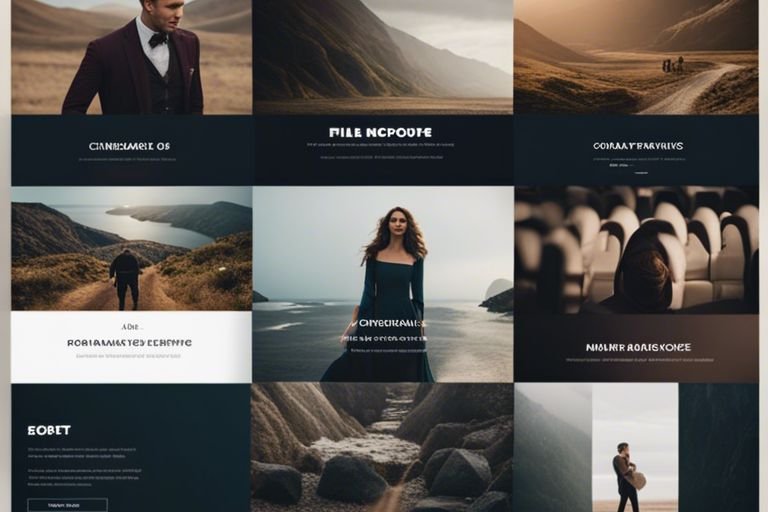Most successful brands understand the power of storytelling in email marketing to engage customers and drive conversions. By crafting compelling narratives, brands can connect with their audience on a deeper level, evoke emotions, and ultimately build brand loyalty. In this blog post, we will explore some exemplary cases of how brands effectively use storytelling in their email marketing campaigns to captivate subscribers and achieve remarkable results.

Key Takeaways:
- Storytelling hook: Brands use storytelling in email marketing to captivate their audience from the beginning with a compelling narrative that draws in the reader.
- Emotional connection: By integrating stories that evoke emotions like nostalgia, humor, or empathy, brands can create a deeper connection with their subscribers.
- Brand identity: Crafting a consistent story throughout email campaigns helps reinforce the brand’s identity and values, making it more memorable for customers.
- Engagement boost: Stories make emails more engaging and relatable, increasing open rates, click-through rates, and overall customer engagement with the brand.
- Call-to-action alignment: Effective storytelling in emails seamlessly leads the reader to the desired action, whether it’s making a purchase, signing up for a webinar, or sharing content on social media.

The Mechanics of Storytelling in Emails
Crafting a Compelling Narrative
Some of the key elements in crafting a compelling narrative in email marketing include identifying a clear beginning, middle, and end to your story. Start by capturing your audience’s attention with a hook, developing the plot through engaging content, and concluding with a strong call to action that compels your readers to take the next step.
Balancing Content with Design
Mechanics for balancing content with design involve ensuring that your visual elements, such as images and layout, complement the written story. Too much text can overwhelm the reader, while too few visuals may fail to engage. Finding the right balance is crucial for maintaining interest and driving action.
A successful email will strike the perfect balance between compelling content and visually appealing design. Emphasize important information with headlines, subheadings, and calls to action to guide readers through your story. Make sure your design elements are consistent with your brand to reinforce brand recognition.

Storytelling Techniques for Email Campaigns
Personalization and Character Development
Once again, personalization and character development play a crucial role in creating engaging email campaigns. An effective way to connect with your audience is by giving your brand a personality and humanizing your email content. By crafting relatable characters or using real customer stories, you can create a more emotional and memorable experience for your subscribers.
Using Customer Journeys to Shape Stories
Campaigns. An necessary storytelling technique for email marketing is using the customer journey to shape your stories. By analyzing the touchpoints and interactions customers have with your brand, you can create narratives that resonate with their needs and desires. This approach allows you to tailor your emails to specific stages of the customer journey, leading to higher engagement and conversion rates.
Plus, leveraging customer data to personalize the storytelling experience can help you build stronger relationships with your audience. By segmenting your subscribers based on their interactions and preferences, you can deliver relevant and timely content that speaks directly to their needs. This not only enhances the customer experience but also increases the effectiveness of your email campaigns.

Analyzing the Impact of Storytelling in Email Marketing
Engagement Metrics and Storytelling
Storytelling plays a crucial role in email marketing by capturing the audience’s attention and keeping them engaged throughout the email. When brands incorporate storytelling into their emails, it can lead to a significant increase in open rates, click-through rates, and overall engagement. According to 12 Top storytelling marketing examples: how brands tell …, the power of storytelling can make emails more memorable and impactful, resulting in higher engagement metrics.
Consumer Behavior and Emotional Connections
Email marketing with storytelling can profoundly impact consumer behavior by creating emotional connections with the audience. When brands tell compelling stories that resonate with their recipients, it can evoke strong emotions and build trust and loyalty. Consumers are more likely to engage with emails that evoke emotions, leading to higher conversion rates and long-term customer relationships.
Implementing Storytelling in Your Email Strategy
Now that you understand the power of storytelling in email marketing, it’s time to implement it into your own email strategy. By incorporating storytelling techniques into your emails, you can create a more engaging and personalized experience for your subscribers, leading to higher open and click-through rates.
Best Practices for Storytelling in Emails
Storytelling in emails should be authentic and relatable. Start by understanding your audience and crafting stories that resonate with their needs, desires, and pain points. Use a narrative arc to build tension and create a connection with your readers. Keep your stories concise and focused, making sure to tie them back to your brand and the value you provide.
Tools and Resources for Effective Email Storytelling
Resources such as email marketing platforms like Mailchimp, Campaign Monitor, or Constant Contact offer built-in features to help you incorporate storytelling into your email campaigns. Additionally, tools like Canva and Unsplash can assist in creating visually compelling elements to complement your stories. Consider leveraging customer data and segmentation tools to personalize your storytelling based on individual preferences and behaviors.
To wrap up
With this in mind, it is clear that storytelling plays a crucial role in effective email marketing campaigns for brands. By incorporating compelling narratives, personal anecdotes, and emotional connections into their emails, brands can engage and resonate with their audiences on a deeper level. The examples we examined demonstrate how storytelling can captivate readers, build brand loyalty, and drive conversions. By crafting a cohesive and authentic story within their email content, brands can create a memorable and impactful experience for their subscribers, ultimately leading to better results and long-term success in email marketing campaigns.
FAQ
Q: Why is storytelling important in email marketing?
A: Storytelling in email marketing is important because it helps to create a more personal connection with your audience. By telling a story, you can engage readers on an emotional level and make your brand more memorable.
Q: How can brands use storytelling in their email marketing campaigns?
A: Brands can use storytelling in their email marketing campaigns by sharing anecdotes about their products or services, highlighting customer success stories, or even weaving a narrative around the brand’s history and values.
Q: What are the benefits of using storytelling in email marketing?
A: Some benefits of using storytelling in email marketing include higher engagement rates, increased brand loyalty, and improved conversion rates. Stories have the power to captivate audiences and create a lasting impression.
Q: Are there any examples of brands successfully using storytelling in email marketing?
A: Yes, many brands have successfully incorporated storytelling into their email marketing strategies. For example, Airbnb often shares stories from hosts and guests, while Patagonia uses storytelling to highlight their commitment to sustainability.
Q: How can I improve my storytelling skills for email marketing?
A: To improve your storytelling skills for email marketing, consider taking a storytelling workshop, studying successful storytelling campaigns from other brands, and practicing writing concise and engaging narratives that resonate with your target audience.

